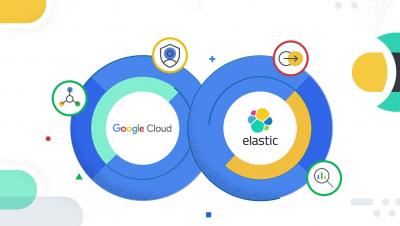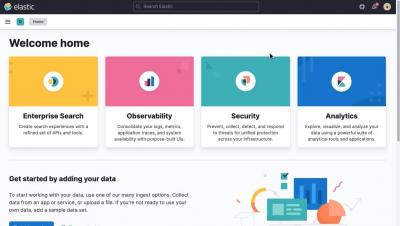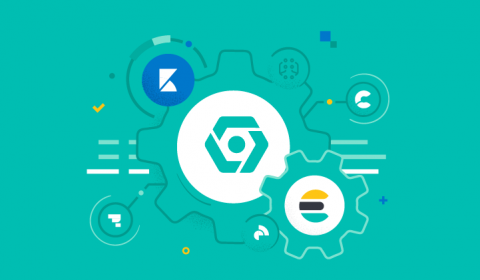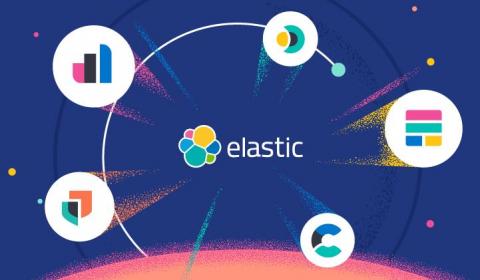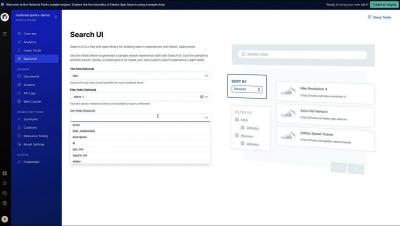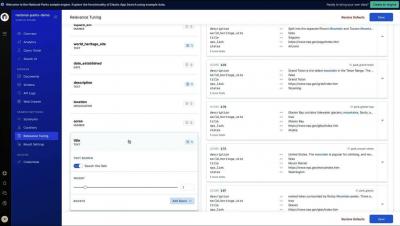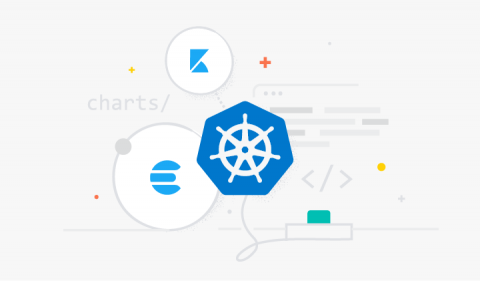Operations | Monitoring | ITSM | DevOps | Cloud
September 2021
Getting to know Kibana
Hard-to-find data is a key threat to digital transformation
CIOs can finally claim victory in information hide-and-seek with help of AI-powered search technology Why do companies still struggle to respond to a service complaint, recommend a product, or connect employees with the data they need to make critical decisions? These tasks are critical to retaining customers and engaging workers in a competitive marketplace, yet each relies on finding the right information, and that’s no easy feat.
The data-driven organization is within reach - if CIOs can tap the power of cloud
Most companies don’t really put their data to work. These strategies can enable IT leaders to maximize value of cloud investments and drive business growth The amount of data businesses store in the cloud is growing 33% per year. Yet more than two-thirds of that information is never used. This failure is undermining CIOs in critical ways.
5 priorities for CISOs to regain much needed balance in 2022
Here’s what security leaders need to do in the face of rising stress levels and cyberattacks Nearly 9 out of 10 CISOs say their existing systems secured their enterprise through a shift to remote work, an ongoing labor shortage, and a huge spike in cybersecurity attacks. But that success came with a price: 64% say they’re more stressed out than they were a year ago. How can CISOs navigate a new set of challenges in 2022, while also regaining some much needed balance?
Ingest data directly from Google Pub/Sub into Elastic using Google Dataflow
Today we’re excited to announce the latest development in our ongoing partnership with Google Cloud. Now developers, site reliability engineers (SREs), and security analysts can ingest data from Google Pub/Sub to the Elastic Stack with just a few clicks in the Google Cloud Console. By leveraging Google Dataflow templates, Elastic makes it easy to stream events and logs from Google Cloud services like Google Cloud Audit, VPC Flow, or firewall into the Elastic Stack.
How the French Ministry of Agriculture deploys Elastic to monitor the commercial fishing industry
Within the French Ministry of Agriculture and Food (the Ministry), our team of architects in the Methods, Support and Quality office (BMSQ) evaluate and supply software solutions to resolve issues encountered by project teams that affect various disciplines. As data specialists, one area we’ve been involved in includes reconfiguring the traceability of activities for the commercial fishing industry.
Elastic APM iOS agent technical preview released
We are proud to announce the preview release of the Elastic APM iOS agent! This release is intended to elicit feedback from the community, while providing some initial functionality within the Elastic Observability stack and is not intended for production use. Now is your chance to influence the direction of this new iOS agent and let us know what you think on our discussion forum. If you find an issue, or would like to contribute yourself, visit the GitHub repository.
Elastic 7.15: Create powerful, personalized search experiences in seconds
We are pleased to announce the general availability of Elastic 7.15, a release that brings a broad set of new capabilities to the Elastic Search Platform (including Elasticsearch and Kibana) and its three built-in solutions — Elastic Enterprise Search, Elastic Observability, and Elastic Security.
How to build a search interface for Your Apps and Websites - 7.14
How to tune search relevance in Elastic App Search
Elastic named EMA Top 3 Award winner in Automatic End-to-End Observability
We are excited to announce that Elastic Observability has earned the Enterprise Management Associates Top 3 Award for Observability in 2021, a recognition of our commitment to empowering customers with products and features that advance digital transformation and solve real-life problems. This award is driven by EMA’s exhaustive, quantitative research into the top challenges and use cases facing developers, DevOps, SREs, IT professionals, and business professionals.
A simplified stack monitoring experience in Elastic Cloud on Kubernetes
To monitor your Elastic Stack with Elastic Cloud on Kubernetes (ECK), you can deploy Metricbeat and Filebeat to collect metrics and logs and send them to the monitoring cluster, as mentioned in this blog. However, this requires understanding and managing the complexity of Beats configuration and Kubernetes role-based access control (RBAC). Now, in ECK 1.7, the Elasticsearch and Kibana resources have been enhanced to let us specify a reference to a monitoring cluster.
What's new in Elastic Maps: Maps tailored to your geospatial data
Sysadmins, cartographers, and dashboard designers can now personalize Elastic Maps to create richer geodata stories. The 7.14 release of Elastic Maps has the geo capabilities to highlight points of interest, hide unnecessary details, and help you explore new trends in your data. Elastic Maps is available now on Elastic Cloud — the only hosted Elasticsearch offering to include all of its latest features.
No more searching for a needle in a haystack: A world where Elastic & StackState team up
Meeting the goal of delivering great performance and reliability in the face of our ever-changing, increasingly autonomous IT environments is fundamentally challenged by a data problem. Sure, there’s lots of it - logs, metrics, and APM traces - but it is exceedingly hard to extract actionable information when there are so many fast moving parts.
How to ingest data with PHP Client into App Search
De Watergroep and Devoteam build Elastic Observability pipeline to deliver water to millions
De Watergroep is responsible for the supply of water to more than 3 million customers and hundreds of companies in Belgium. An organisation operating in the public sector, De Watergroep's main goal is to continuously ensure the availability of high-quality drinking water. De Watergroep also is constantly engaged in technological innovation, focusing on keeping distribution costs low, and making maintenance more cost efficient.
Elastic and HashiCorp partner to bring infrastructure-as-code to Elastic Cloud
Operations and SRE teams often rely on HashiCorp Terraform to safely manage production-related infrastructure using methodologies such as infrastructure as code, which allows you to apply peer-reviewed infrastructure changes in an automated and controlled fashion.
Secure your deployments on Elastic Cloud with Google Cloud Private Service Connect
We are pleased to announce the general availability of the Google Cloud Private Service Connect integration with Elastic Cloud. Elastic Cloud VPC connectivity is now available to all customers across all subscription tiers and cloud providers (AWS, Microsoft Azure, and Google Cloud).
Tracing AWS Lambdas with OpenTelemetry and Elastic Observability
Open Telemetry represents an effort to combine distributed tracing, metrics and logging into a single set of system components and language-specific libraries. Recently, OpenTelemetry became a CNCF incubating project, but it already enjoys quite a significant community and vendor support. OpenTelemetry defines itself as “an observability framework for cloud-native software”, although it should be able to cover more than what we know as “cloud-native software”.
With Elastic Cloud on AWS, Smarter City Solutions ensures seamless customer experience across the Smarter Parking Platform
Ensuring a seamless customer experience is a growing challenge for digital technology providers. Yet, as functionality and a customer base scale, predictability can become challenging.
Achieving the Army's data imperatives at the tactical edge with Elastic
As the Industrial Age Army transforms to the Information Age Army, Army leadership recognizes the need for adaptable technologies that enable data exchange at the tactical edge. Not only must these technologies be in lock step with the 8 guiding principles of the DoD Data Strategy, but they must also deliver on the Army’s data imperatives of speed, scale and resilience.


